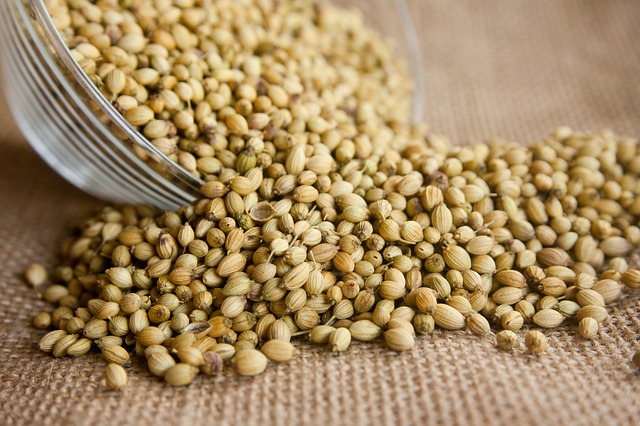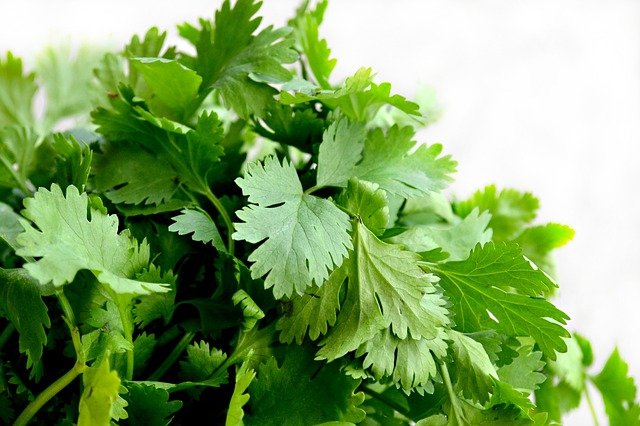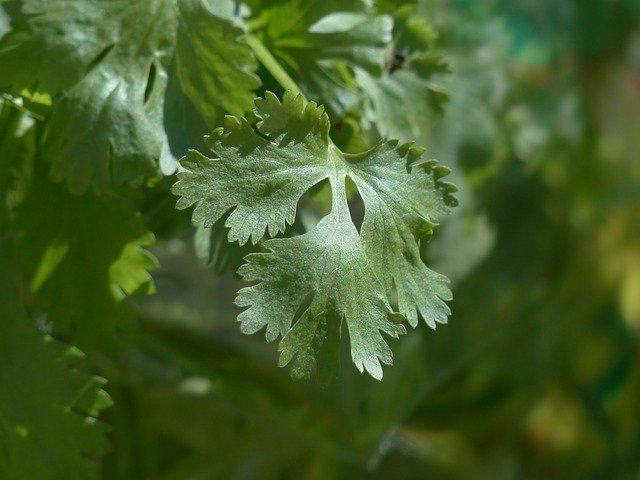Coriander (Coriandrum sativum L.) is a plant from the celery family (so it is closely related to parsley and celery), originating in the Mediterranean area, where it grows in dry, grassy grasslands. It was known in antiquity and was used as a spice plant. Currently, its cultivation is widespread in the world. Sometimes it also goes wild. Its largest producers are Morocco and India, as well as France and the Netherlands.
Coriander is an annual plant, about 50 cm tall with tiny white or pink flowers.
The medicinal raw material is coriander fruit. They have a spherical or oval shape and a size of 1.5 to even 7 mm.
Coriander leaves and root are also used as an addition to the dishes.

Chemism
Among all the chemical compounds contained in coriander fruit, the most important is essential oil, the content of which varies, depending on the variety, between 0.2 and 1.5%. It gives the coriander its characteristic aroma. Coriander contains umbeliferon, scopoletin, up to 17% protein compounds and up to 20% fat.
Medicinal use
Coriander fruit is used medicinally as a carminative and antispasmodic, and it has been reported to have a sedative effect. The medicinal substances contained in coriander act as an auxiliary during therapy that lower the level of triglycerides and bad cholesterol (LDL). Therefore, coriander is a product supporting the prevention of heart attacks.
Coriander fruit is also used in herbal mixtures as a flavour enhancer.
Coriander is also used in cosmetics, mainly for the production of soaps, lotions and creams. It is worth knowing that it has the ability to remove dead cells, so it is used as an ingredient in preparations with an exfoliating effect.

Culinary use
Coriander, however, is best known for its culinary uses.
It is hard to imagine oriental dishes without coriander. It is as indispensable there as parsley in Polish cuisine. Both fruits and leaves are used here. Ground fruit is included in curry and curry paste. In Thai cuisine, coriander root is added to soups because it has a more intense and distinct flavour than the leaves.
Coriander is also used in Polish cuisine. Together with cumin and black cumin, it is an excellent addition to bread. It can also be a component of herbal mixtures for game, fish, lamb, pates and marinades. It can also be added to some mustards.
The use of coriander in the production of vodkas and liqueurs cannot be omitted either. For example, it is one of the ingredients of gin and the famous Charetreuse liqueur and even some types of beer.
As you can see, coriander is a valuable medicinal and spice plant, which confirms its universal and versatile use both in pharmacy and in the kitchen.
AUTHOR: Dr n. farm. Andrzej Tarasiuk




